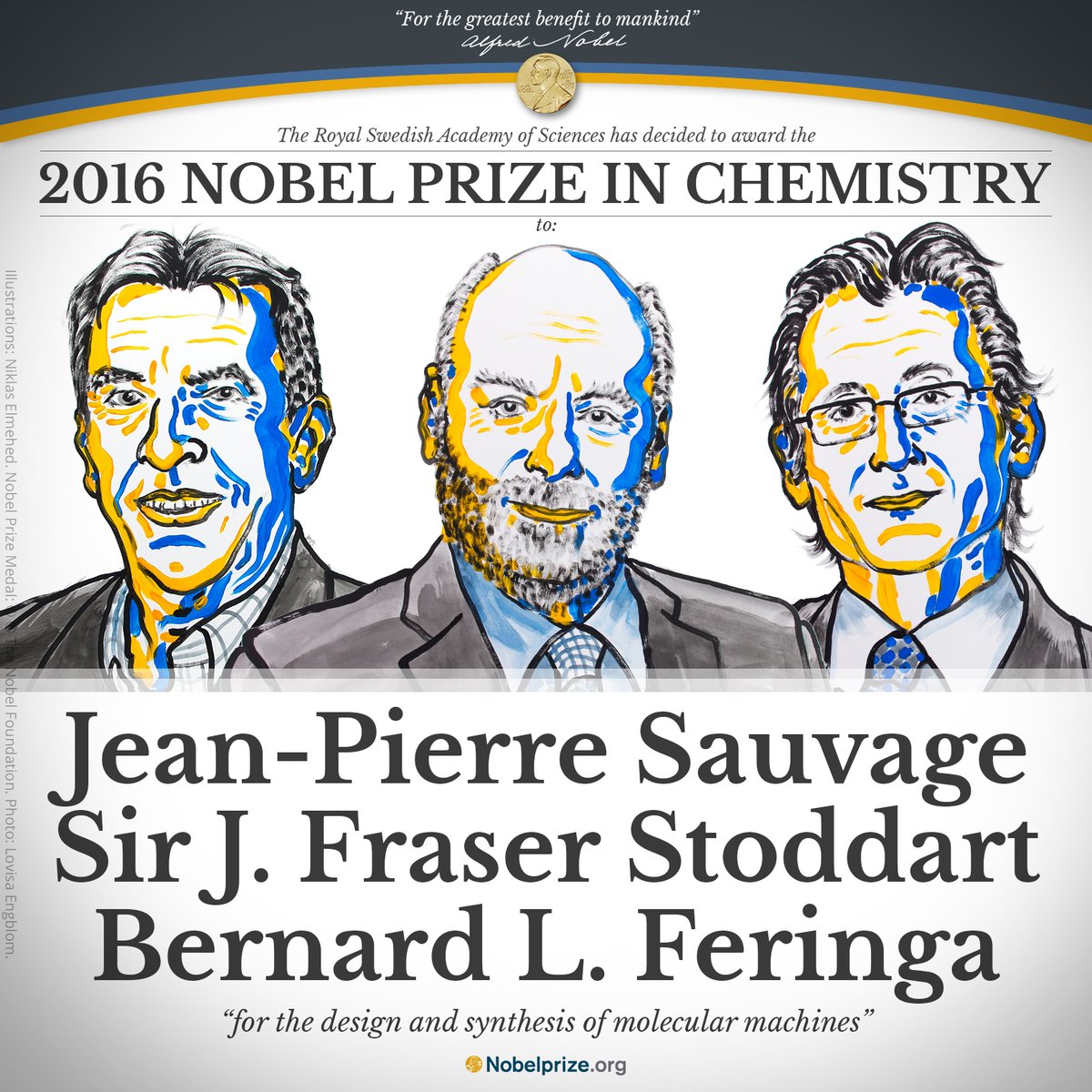Nobel Prize winners in chemistry announced
- News

Today in Stogkolm, Sweden, Nobel laureates in chemistry were announced. The award and recognition of the scientific community for the work done were received by three scientists: Jean-Pierre Savage, Bernard Fehring and Fraser Stoddart with the wording “for the design and synthesis of molecular machines”. The corresponding press release is posted on the official website of the Nobel Prize.
Unlike the three prize winners in physics who are British, the team of chemists is international. Jean-Pierre Savage occupies the position of research director at the French National Center for Scientific Research, Sir Fraser Stoddart lives and works at Northwestern University of the USA, and Bernard L. Fehring is a professor in organic chemistry at the University of Groningen, the Netherlands.
The prize was awarded for the creation of molecular machines based on catenans . Such molecular compounds can perform certain tasks when energizing them.
As in the case of physics, scientists began their journey to the prize long before its receipt. In 1983, Jean-Pierre Savange synthesized catenan. Usually, in the synthesis of catenans, they are held together by a strong covalent bond, but the ring-shaped molecules synthesized by Savange have a freer mechanical bond between them .
In 1991, Fraser Stoddart synthesized rotaxane.- a class of compounds consisting of a dumbbell-shaped molecule and a cyclic molecule “worn” on it. He placed a thin molecular ring on the molecular axis and showed that the ring was able to move along the axis. Later, with the participation of the scientist, molecular "muscles" and molecular "lifters" were developed.
Bernard Feringa was the first scientist to create a molecular rotor . In 1999, he achieved a stable molecular screw rotation in the same direction.
Taken together, the work of scientists opens up the possibility of creating nanorobots for humanity. So far, technologies are just emerging and the Nobel Committee compares the stage of their development with the electric motors of the 1830s: then scientists and inventors demonstrated various rotating arms and wheels, not knowing what their designs would lead to and how common they would be.
